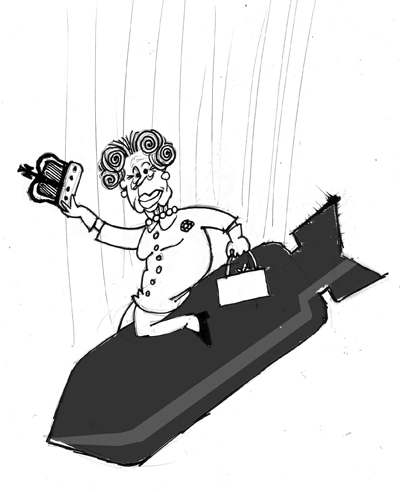Reviews
NORDIC LIGHTS: Work, Management and Welfare in Scandinavia
Sandberg (A), SNS Förlag 2013, ISBN 9789186949372
Available as an ebook from www.akesandberg.se/nordic-lights/
The global dominance of neoliberal ideas has led to a major decline of social and environmental justice in Europe. Bastions of social democracy such as Scandinavia, never of course perfect models, have been seriously threatened by these neoliberal ideas but have actively resisted with some successes. Now the Scottish referendum is looming, a great deal of interest is being shown in the Nordic circle by both sides: to prove or disprove the view that small and relatively enlightened countries could be political and economic models for an independent Scotland. Some commentators have mistakenly described those sympathetic to the social and economic policies of Scandinavia as being uncritical whilst they themselves remain befuddled by and sympathetic to the reactionary and vicious policies of the coalition.
In this context Nordic Lights, a recent book edited by a group of social scientists on Work, Management and Welfare in Scandinavia, should be essential reading from empirical and theoretical perspectives. The book explores a series of tensions These include ones surrounding welfare and individualism, gender issues in new management strategies, business process re-engineering, flexible working, lean production, managing work environment, precarious work, employees on private sector boards, and threats to trade unions from new management approaches and production systems. Particular sectoral groups are examined too such as those in digital and print media and developments in Ford and Volvo after ownership changed. All is not gloom and doom. The authors report that the impact of global capitalism has been slowed by union membership, workplace organisation and other structures as well as by the existence of many nationally agreed collective agreements. But even so, conservative administrations slashed social insurance funding, unemployment insurance system and training budgets for new jobs.
In certain fields, the resistance has been even more successful and the Scandinavian approach offers some indicators for strategies that could be adopted in Scotland post-referendum whatever the result. For example, Annette Kamp and Klaus Nielsen provide a complex and subtle analysis of Nordic trends relating to the “Work Environment Management” concept and consider new developments to workplace health and safety. The concept appeared in the 1970s in Scandinavia drawing on industrial relations ideas with democracy and participation of employees at its centre. Health and safety at work was placed on equal footing with quality and environmental protection: something that never occurred in the UK where market thinking dominates regulatory approaches and has even led to changes in mission statements of bodies such as HSE charged with protecting worker health and safety to include economic growth as a key objective.
The Nordic debate at the time was whether this ensured workplace health and safety would be prioritised or would be marginalised and neutralised. Trade union safety reps and safety committees were viewed as part of the ‘management of health and safety’ but in a far less hostile work environment to that prevailing in the UK. Tripartism was also less tokenistic and stultifying in the Nordic circle than it proved to be in the UK. Significantly, the Scandinavian application of work environment management was not influenced in any major way by such things as lean production, business process re-engineering and balanced score cards. In the UK we would consider the lack of these influences as a very positive feature.
As time passed, more management-oriented ideas were introduced in Nordic countries and today what might be termed as mainstream ‘human resource management’ ideas have influenced employers stressing motivation, self-management and individual developments as the key to success. This linked to ‘soft law’ ideas that supposedly lead to individual enterprises improving their own working environments. Nevertheless the authors conclude “It is a striking fact that many of the forms of management (Lean Production etc.) that have passed through Scandinavian enterprises in the last 30 years have not had a stronger impact in the field of working environment. This is probably because management of the working environment is implemented in close interaction with public regulation, and the enterprise therefore has to consider the question of legitimacy in relation to the surrounding society” (p319).
In the UK , including Scotland, the ‘soft laws’ and ‘better’ and responsive regulation agenda has proved exceptionally influential across all parties and threatens efforts to maintain never mind improve basic work and wider environmental health and safety conditions. In the Nordic countries, the commitment to effective public regulation on hazards on the other hand has wide societal approval and appears to operate relatively harmoniously with efforts to support the economic activity of SMEs. This may perhaps be because the Nordic countries not only accept the analysis that healthy work and healthy workers are good for the economy but adopt the analysis in practice.
As one American commentator on the book has noted: ”The Nordic and Scandinavian countries have long been beacons for people around the world who were eager to see workplaces transformed into spaces where working people could express their humanity and aspirations” (Adler in Sandberg 2013: 7). With all its faults, this Nordic model still has much to commend it to Scotland.
Prof Andrew Watterson


